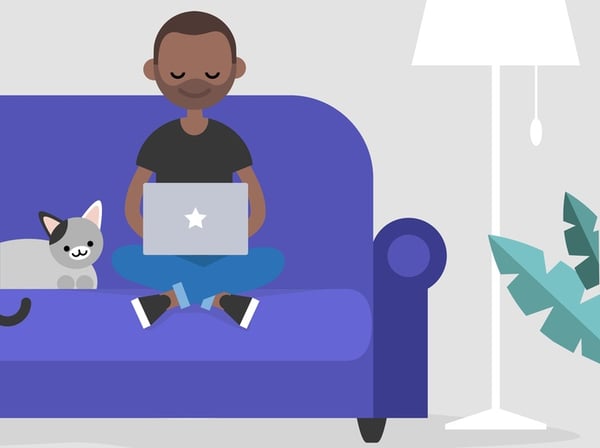Empower a remote team to stay on task, increase productivity, and effortlessly collaborate using these tools.

Forty-five percent of Millennials intend to leave companies within two years that have inflexible work environments.
Three of the top five most important factors Millennials use to evaluate a job prospect center on flexible work. (Read this to learn the six ways employers benefit when offering Millennials flexible work options.)
It's clear Millennials put a premium on flexible work. But it's not always clear to managers how they can ensure their remote workers remain connected and productive.
Mobile technology and ubiquitous connectivity have enabled the powerful transition from workplaces to workspaces. The workspace outside of the office can be productive...if the right tools are utilized.
These tools will empower a remote team to stay on task, increase productivity, and effortlessly collaborate.
- Slack is a cloud-based team collaboration tool. It's an open chat environment that offers real-time one-on-one or group messaging, screen sharing, and more. (This is perhaps the premier solution for any remote team. Many of the below tools can be integrated with Slack.)
- Asana is a cloud-based communication tool that includes task management, conversation tracking, team assignments, and project archives.
- Basecamp is a project management system (more robust than Asana) that offers task monitoring, discussions, documents, scheduling, milestones, collaboration, and more.
- Zoom or Skype are video conferencing services that enable online meetings and cross-platform group chat.
- Dropbox and Google Drive are file-sharing services that make it easy to sync files, organize, and collaborate together.
- LastPass is a cloud-based tool that securely remembers passwords and allows teams to easily access the necessary tools and services.
- Crystal serves up the personality profile of the person you are emailing or tweeting so that the communication is ideal for the subject.
- Trello offers easy and beautifully designed ways to set objectives, organize and prioritize projects and track progress. (Trello has an integration that connects directly to Slack.)
- SnagIt or Screencast lets users share videos and images, and has mark up tools like blur, spotlight, magnify, and stamps.
- Hubstaff or When I Work are time trackers that make it easy for employees and managers to track time, boost accountability, invoice clients, pay employees, and see in-depth reporting.
- Mural can be used for remote brainstorming and idea mapping.
- IDoneThis is an online tool that gathers the team members' email replies to "What did you get done today?" and the puts them in a handy report for the manager or team to review. (There is also an integration that connects directly to Slack.)
- Buffer allows teams' to schedule, publish, and analyze all social media posts.
- Tango Card makes it easy to send digital rewards (e-gift cards) to your team. (There is also an integration that connects directly to Slack.)
- OfficeVibe, CultureAmp, and TINYpulse are effective tools for monitoring employee morale and engagement. (OfficeVibe has an integration that connects directly to Slack.)
Be open to integrating new technology as Millennials will be interested in finding new and improved ways to lean into technology to work smarter.
It's important that everyone on a remote team uses the same tools so that productivity and collaboration can be streamlined and bottlenecks minimized. A good rule of thumb is to make the tools a policy instead of a suggestion.
As a Millennial and Generation Z keynote speaker and trainer, I help companies lead, engage, and sell to the emerging generations. If you'd like help solving tough generational challenges inside your organization, click here.





